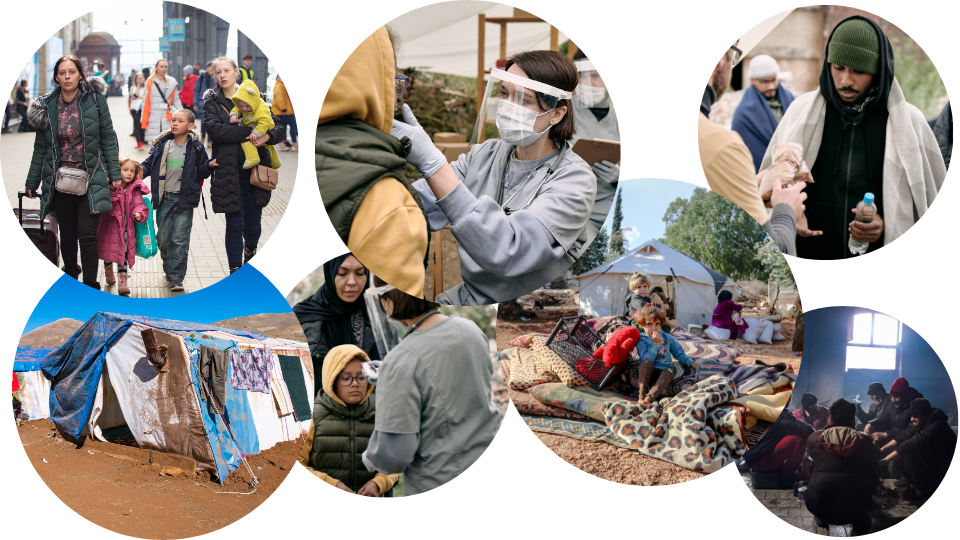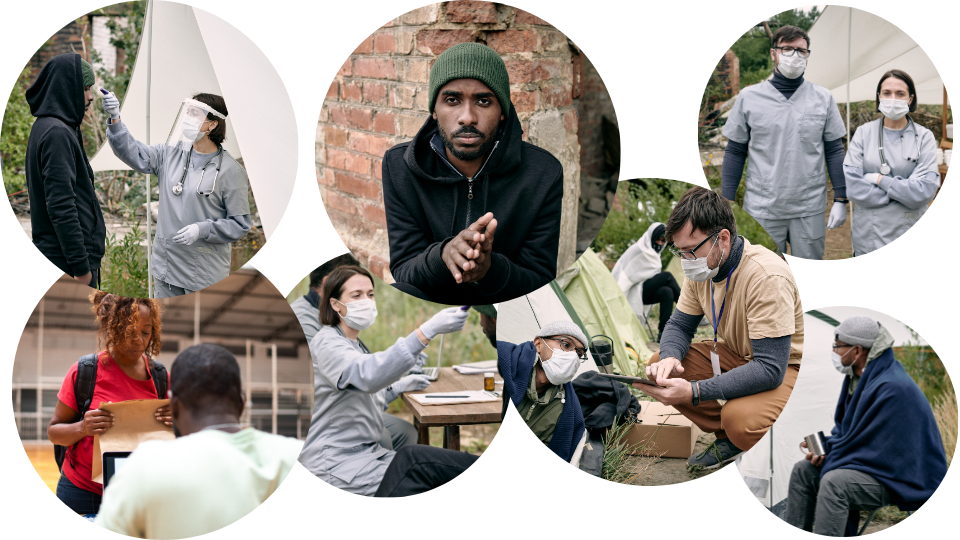-
GeneralGeneral
-
Substance Use Disorders Among Forced Migrant Populations in Humanitarian Settings Homepage


Welcome to this short course on "Substance Use Disorders Among Forced Migrant Populations in Humanitarian Settings." This course is designed to provide healthcare professionals, humanitarian workers, and other interested individuals with a deep understanding of the unique challenges and complexities surrounding substance use disorders (SUDs) in refugee and displaced populations.
This course will equip you with the knowledge and skills to:- Understand the epidemiology of Substance Use in Forced Migrant Populations
- Grasp core concepts related to Substance Use and how it is affected by Forced Migrant Situations
- Explore various screening methods for harmful substance use
- Apply DSM-5 guidelines for diagnosing SUDs in the Forced Migrant context
- Examine behavioral therapy approaches, with a focus on cognitive behavioral treatment modalities
- Introduction - Epidemiology and Context of SUD
- Screening and Diagnosis of SUD
- Treatment Interventions
Each module is designed to build upon the previous one, providing you with a holistic understanding of SUDs in forced migrant populations and equipping you with practical skills for screening, diagnosis, and treatment. Every module is accompanied by videos and microlearning activities to help facilitate different learning styles.
By the end of this course, you will have gained valuable insights into the unique challenges faced by forced migrant populations in humanitarian settings and be better prepared to address substance use disorders in these vulnerable communities.
This course combines theoretical knowledge with practical applications, ensuring that you can effectively apply what you learn in real-world humanitarian contexts. Whether you're a healthcare provider, a humanitarian worker, or simply interested in this critical area of public health, this course will provide you with the tools and knowledge to make a meaningful difference.This course was developed by Jenna Butner, MD, AAHIVS, FASAM, MPH, as part of her Capstone Project at Yale School of Public Health, under the supervision of Miriam Chickering, RN, BSN, NE-BC, and Kirsten Johnson, MD, MPH. Dr. Butner was mentored by Kaveh Khoshnood, MPH, PhD, Associate Professor and Faculty Director for the Humanitarian Research Lab (https://medicine.yale.edu/lab/khoshnood/) at Yale School of Public Heath
The estimated completion time for this course is 2 hours.
Engaging with this course
- You may browse this course for free to learn for your enrichment. There are no requirements.
- To register for this course, complete the registration form.
To PASS and Obtain a Certificate, a learner must successfully complete:- All reading requirements,
- All quizzes and pass with a 80% with unlimited attempts,
- The final exam with a minimum of 80% and a maximum of 3 attempts, and
- The self and course evaluation forms.
-
Module 1 Introduction - Epidemiology and Context of SUD
Upon completion of this lesson, you will be able to: Learning Objectives:
Learning Objectives:
- Describe epidemiology of SUD in refugee populations
- Elucidate core SUD concepts
Click here to start this module
1 SCORM package, 2 URLs, 1 Quiz -
Module 2 Screening and Diagnosis of SUD
Upon completion of this lesson, you will be able to: Learning Objectives:
Learning Objectives:- Explore various modalities for screening for harmful use of substances
- Review diagnosis of SUD per DSM-5 guidelines
Click here to start this module
1 SCORM package, 2 URLs, 1 Quiz - Explore various modalities for screening for harmful use of substances
-
Module 3 Treatment Interventions
Upon completion of this lesson, you will be able to: Learning Objectives:
Learning Objectives:
- Examine Behavioral therapy approaches, primarily cognitive behavioral treatment modalities.
Click here to start this module
1 SCORM package, 2 URLs, 1 Quiz -
Course and Self Evaluation & Certificate
 In this section, you can provide feedback about this course to help us make NextGenU.org better. Once evaluations are completed, you will be able to download your certificate of completion.
In this section, you can provide feedback about this course to help us make NextGenU.org better. Once evaluations are completed, you will be able to download your certificate of completion.

